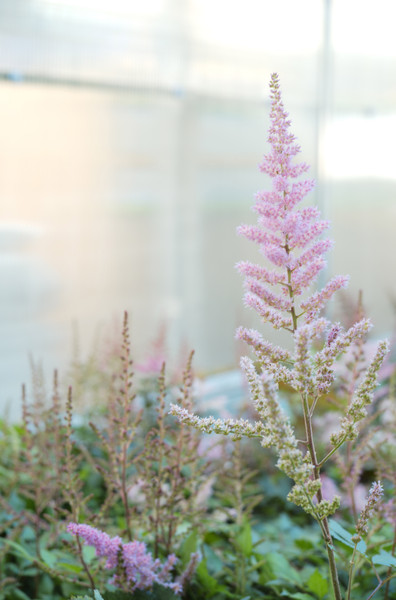Astilbe
Posted by Aaron Barton on Jul 4th 2022
Astilbe (False Goatsbeard)
Among the classic shady regulars, Astilbe (a-STIL-bee) stands out from the crowd, providing a dramatic show of bright plumes to brighten up shady and sunny spots alike. Astilbe, of the Saxifrage family, Saxifragaceae, is a stunning and durable late spring to mid-summer blooming perennial, resistant to deer and rabbit feeding and tolerant of both road salt and juglone, produced by black walnut and hickory trees. Also known as false goatsbeard, Astilbe is native to regions of East Asia and North America, where it is typically found in woodland areas and ravines.
While Astilbe generally prefer moist, rich, well-drained soils in areas of partial sun, false goatsbeard is an incredibly tolerant and adaptable plant, thriving in dense clay soils and even tolerating periods of standing water. Astilbe will thrive in nearly any light exposure, from full shade to full sun, though they tend to bloom most abundantly and vibrantly with at least three hours of direct sun each day.
Astilbe form clumps of attractive compound, fern-like foliage ranging in color from bright green to deep purple, above which slender upright stems hold airy panicles of flowers ranging in color from white, to pastel pinks, to bright fuchsias, and even reds. With seemingly endless varieties and hybrids, Astilbe offer a wide range of sizes and appearances, ranging in size from 18-48” tall and 18-36” wide, and blooming denser, pyramidal panicles or light, airy blooms depending on species and cultivar. Forming a small clump over time by underground rhizomatous root growth, Astilbe is excellent in small groupings or massed as a groundcover and is best divided in the fall every three to four years to keep plants lush and blooming their best.
Commonly available Astilbe are typically a cultivar of one of three species:
Astilbe chinensis, a later blooming species with coarse, often bronze-green foliage and narrow-branched flower panicles, including the vibrant pink blooms of ‘Maggie Daley’ and striking red stems and blooms of ‘Vision in Red.’
Astilbe japonica, an early blooming species with green, sometimes red-tinged, glossy leaves and dense pyramidal flowers, including the elegant white blooms of ‘Deutschland,’ and bright pink flowers of ‘Rheinland.’
Astilbe x arendsii, a diverse hybrid grouping of numerous crosses selected by German horticulturist Georg Arends, encompassing most Astilbe hybrids commonly sold, including the striking crimson plumes of ‘Fanal’ and bright white of ‘Happy Day.’
Happy planting!

